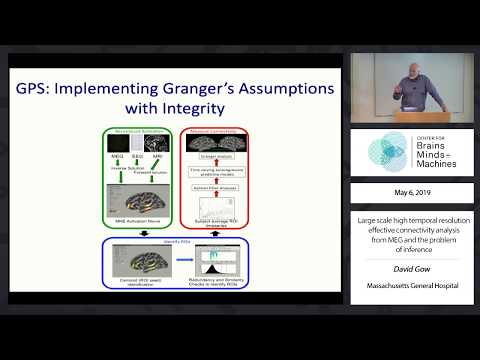Description:
Explore a comprehensive lecture on large-scale high temporal resolution effective connectivity analysis in MEG and the challenges of inference. Delve into the complexities of analyzing multiple influencing factors in judgments and the limitations of post-interaction observations. Examine BOLD imaging's potential and challenges in identifying key processing components and localizing them based on empirical literature. Learn about Granger Causation and its implementation through lagged vector autoregression models, as well as the critical assumptions and requirements of classical Granger causation. Discover the GPS method for implementing Granger's assumptions with integrity, including imaging considerations and ROI identification techniques. Investigate the stationarity problem in prediction and the application of Kalman filters. Study data reduction through graph theory and the comparison of experimental conditions. Gain insights into neural decoding techniques using the same data to probe representation. Conclude by addressing the challenges and opportunities in this field of neuroscience research.
Read more

Large Scale High Temporal Resolution Effective Connectivity Analysis
Add to list
#Science
#Biology
#Neuroscience
#Data Science
#Data Analysis
#Engineering
#Electrical Engineering
#Signal Processing
#Kalman Filter